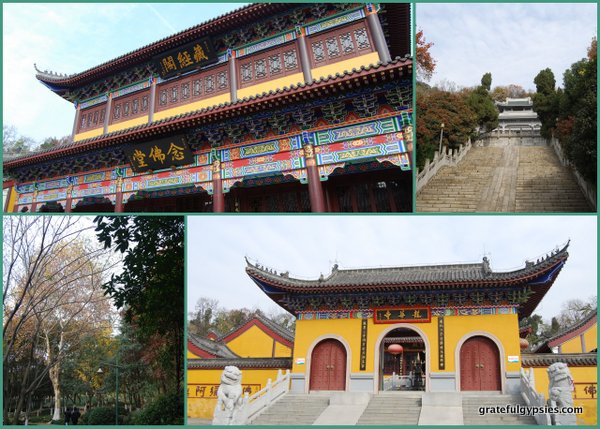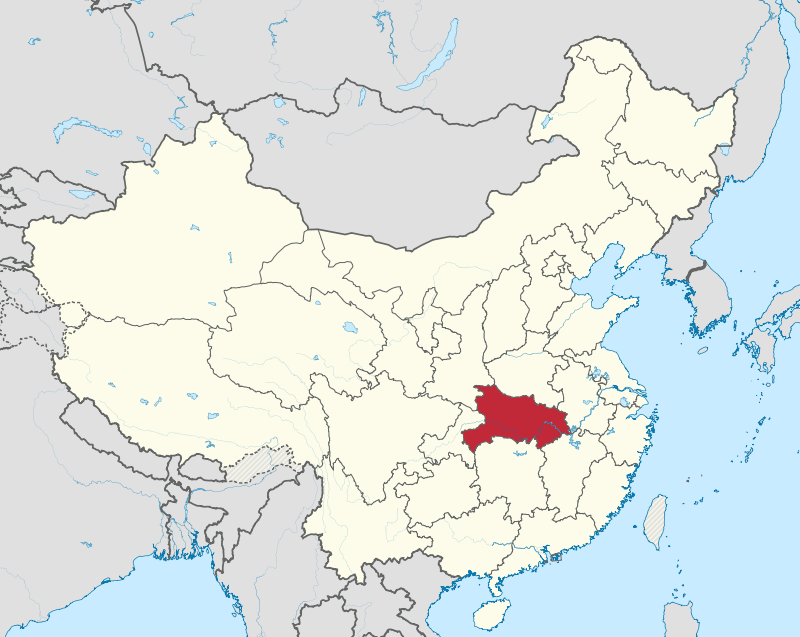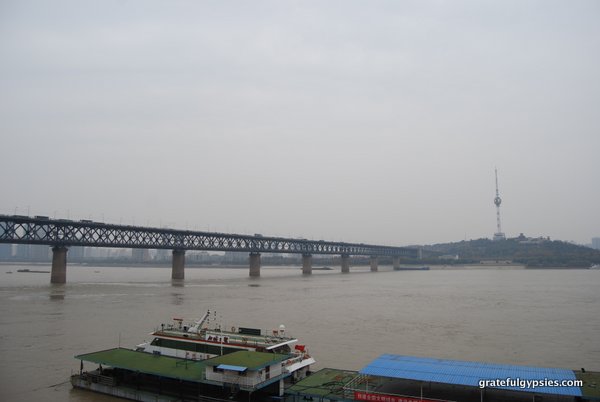Better Know a… Province (Hubei) Posted by sasha on May 25, 2016 in Uncategorized
We’ve already visited Hunan, so it’s only natural that our next stop be “North of the Lake,” as we head to Hubei (湖北 – hú běi).
History

Longhua Temple in Wuhan.
The area that is today known as Hubei was home to Neolithic cultures, as evidenced by painted pottery that was excavated there. During the Spring and Autumn Period, the area was part of the State of Chu. The Chu would go to war with the Qin, who eventually won and formed the first unified empire of China. During the subsequent Han Dynasty, modern-day Hunan and Hubei formed a province known as Jingzhou (荊州 – jīng zhōu). Control of the area would change numerous times in the following centuries, with the name and borders changing as well.
During the reign of the Mongols, the area was known as Huguang (湖广 – hú guǎng) covering Hubei, Hunan, and parts of Guangdong and Guangxi. The Ming Dynasty would later drive out the Mongols, and their version of Huguang was basically modern Hubei and Hunan combined. The Manchu Qing Dynasty split Huguang into two provinces in 1644.
In 1911, the Wuchang Uprising (武昌起義 – wǔ chāng qǐ yì) ended two millennia of imperial rule in China, overthrowing the Qing Dynasty and establishing the Republic of China. During World War II, the province was split as the eastern section was conquered by Japan while the western area remained under Chinese control.
Geography

Hubei on the map.
As its name would imply, Hubei is north of Lake Dongting (洞庭湖 – dòng tíng hú). The province is landlocked and shares a border with Hunan, Chongqing, Shaanxi, Henan, Anhui, and Jiangxi. The terrain of the province is quite varied – it has countless lakes and rivers, mountain ranges, and plains. The Yangtze River enters Hubei from the west via the Three Gorges (三峡 – sān xiá). It’s split into thirteen prefecture-level divisions, one autonomous prefecture, and three county-level cities. The provincial capital is Wuhan (武汉 – wǔ hàn), which was once three different cities split by rivers.
Climate
Hubei has a humid subtropical climate and has four distinct seasons. Winters are dry and cool, while summers are hot and humid here. Spring and autumn are quite pleasant, and are probably the best times of year to visit. Most of the rain falls throughout the summer months here.
Population
Around 60 million people call Hubei province home. The population is almost entirely Han, but there’s a considerable amount of Miao and Tujia people living in the highlands in the southwest. There are also Hui people (Chinese Muslims) in the northern parts of the province. Not surprisingly, Wuhan is the most populous city, with around 7.5 million people.
Culture
People speak pretty standard Mandarin in Hubei. When it comes to the local culture, traditional Chu opera (楚剧 – chǔ jù) remains very popular. Check out a clip to see what it’s like:
Wuhan is the educational and cultural center of the province (and central China in general). It’s home to many universities, temples, art museums, and more. When it comes to the cuisine of the province, the most famous dish is without a doubt steamed Wuchang fish (清蒸武昌鱼 – qīng zhēng wǔ chāng yú).
An interesting factoid about the people of Hubei is that they’re known as “nine-headed birds” (九头鸟 – jiǔ tóu niǎo). This comes from a saying, “In the sky live nine-headed birds. On the earth live Hubei people.” (天上九头鸟,地上湖北佬 – tiān shàng jiǔ tóu niǎo, dì shàng hú běi lǎo). The mythological birds are said to be aggressive and hard to kill, so apparently that describes Hubei people as well.
Famous Places

Along the Yangtze River in Wuhan.
For many, the highlight of visiting Hubei comes in the form of a cruise along the Yangtze River. The province is also home to the Three Gorges Dam (三峡大坝 – sān xiá dà bà), the controversial project which is the world’s largest hydropower project.
https://www.youtube.com/watch?v=WRalttPgLqU

Yellow Crane Tower
Another popular attraction is the Yellow Crane Tower (黄鹤楼 – huáng hè lóu) in Wuhan, a traditional Chinese tower which has been rebuilt many times over the years.
Those seeking to experience the great outdoors should head to Shennongjia (神农架 – shén nóng jià), a nature reserve located between Daba and Wudang Mountains.
https://www.youtube.com/watch?v=LA0mgl7X–w
While it’s not one of the most famous or popular areas of China, Hubei is home to diverse landscapes, ancient culture, and is vitally important in Chinese history.

Build vocabulary, practice pronunciation, and more with Transparent Language Online. Available anytime, anywhere, on any device.
About the Author: sasha
Sasha is an English teacher, writer, photographer, and videographer from the great state of Michigan. Upon graduating from Michigan State University, he moved to China and spent 5+ years living, working, studying, and traveling there. He also studied Indonesian Language & Culture in Bali for a year. He and his wife run the travel blog Grateful Gypsies, and they're currently trying the digital nomad lifestyle across Latin America.




Leave a comment: